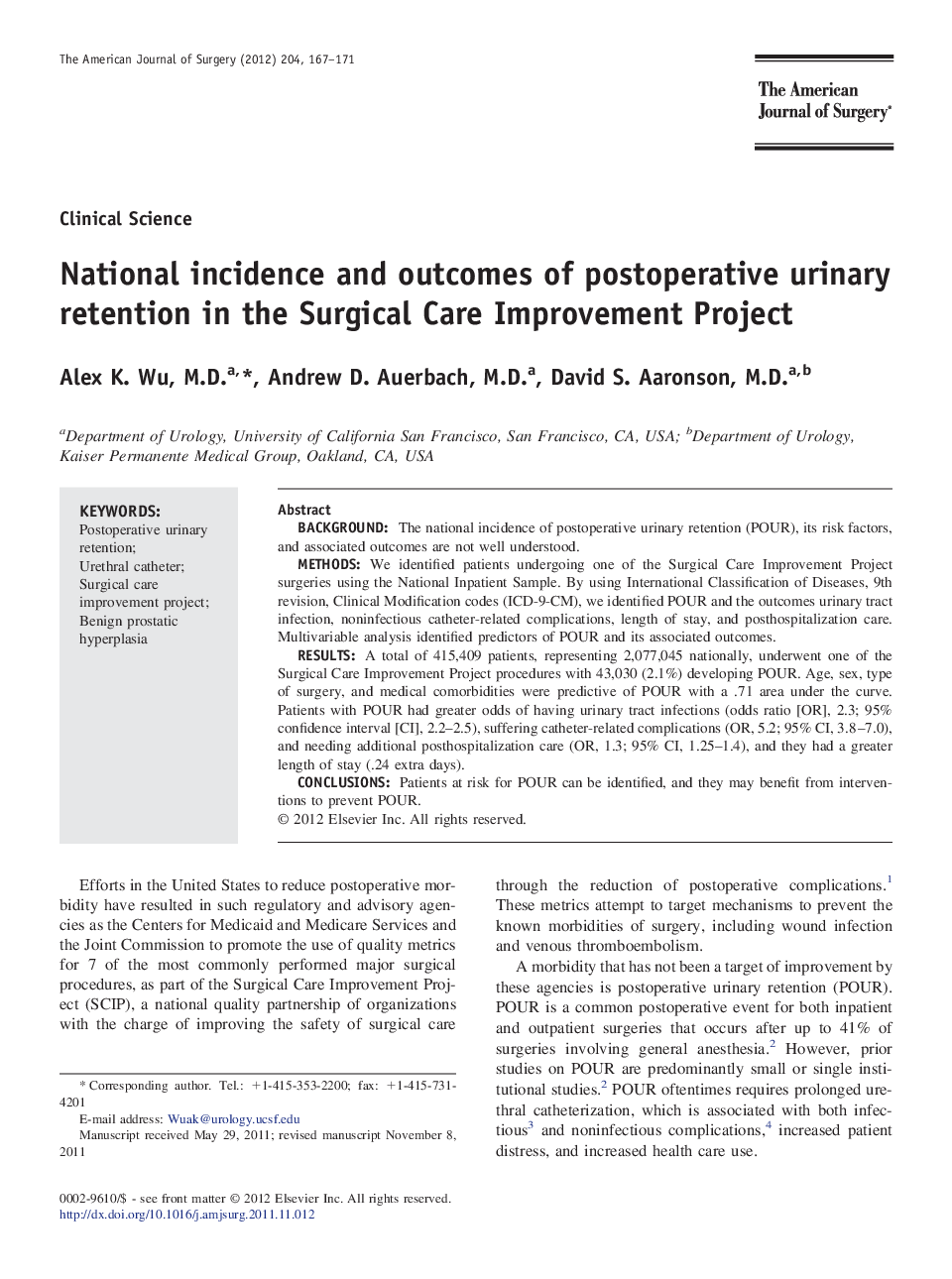| Article ID | Journal | Published Year | Pages | File Type |
|---|---|---|---|---|
| 4279549 | The American Journal of Surgery | 2012 | 5 Pages |
BackgroundThe national incidence of postoperative urinary retention (POUR), its risk factors, and associated outcomes are not well understood.MethodsWe identified patients undergoing one of the Surgical Care Improvement Project surgeries using the National Inpatient Sample. By using International Classification of Diseases, 9th revision, Clinical Modification codes (ICD-9-CM), we identified POUR and the outcomes urinary tract infection, noninfectious catheter-related complications, length of stay, and posthospitalization care. Multivariable analysis identified predictors of POUR and its associated outcomes.ResultsA total of 415,409 patients, representing 2,077,045 nationally, underwent one of the Surgical Care Improvement Project procedures with 43,030 (2.1%) developing POUR. Age, sex, type of surgery, and medical comorbidities were predictive of POUR with a .71 area under the curve. Patients with POUR had greater odds of having urinary tract infections (odds ratio [OR], 2.3; 95% confidence interval [CI], 2.2–2.5), suffering catheter-related complications (OR, 5.2; 95% CI, 3.8–7.0), and needing additional posthospitalization care (OR, 1.3; 95% CI, 1.25–1.4), and they had a greater length of stay (.24 extra days).ConclusionsPatients at risk for POUR can be identified, and they may benefit from interventions to prevent POUR.
